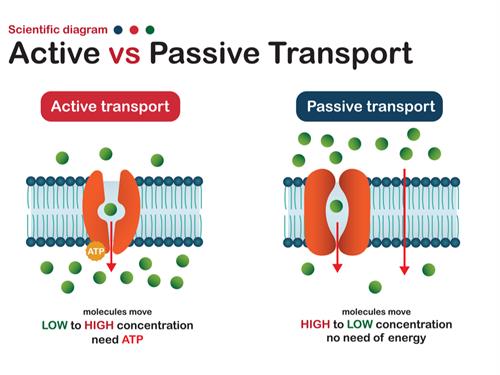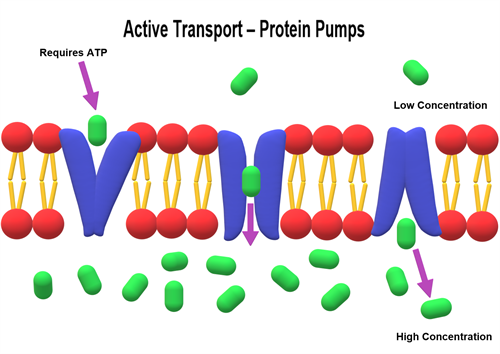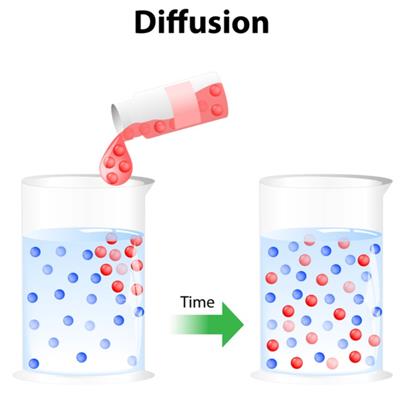
PUMPA - SMART LEARNING
எங்கள் ஆசிரியர்களுடன் 1-ஆன்-1 ஆலோசனை நேரத்தைப் பெறுங்கள். டாப்பர் ஆவதற்கு நாங்கள் பயிற்சி அளிப்போம்
Book Free DemoIn plants, diffusion and active transport are used to transfer materials into and out of the cells.

Active transport and passive transport
Active transport:
The type of transport which utilises energy to pump molecules against a concentration gradient is known as active transport.

Active transport: Pumps
This transport is carried out by membrane-bound proteins, which use energy to transport the substances across the cell membrane and are often referred to as pumps. These pumps transport the substances from a low concentration to a high concentration and is hence known as uphill transport.
Passive transport:
The type of transport which does not utilises energy to pump molecules along the concentration gradient is known as passive transport.
Types of passive transport:
- Osmosis
- Diffusion
- Facilitated diffusion
The movement of ions and molecules along the concentration gradient without the application of any external energy.
Diffusion:

Before and after diffusion
Diffusion is described as the free movement of solid, liquid and gaseous molecules from a higher concentration to a lower concentration without the usage of energy.
The process of diffusion
Reference:
https://upload.wikimedia.org/wikipedia/commons/4/45/Active_Transport_-_Protein_Pumps.png